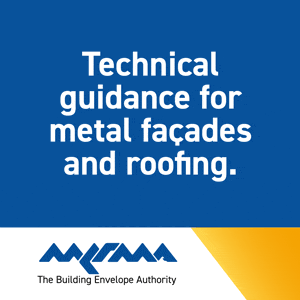Specifying GRP Rooflights in 2025 and beyond
- Specify & Build
- Jul 26
- 3 min read
Following the withdrawal of the BS 476 national fire tests, Mark Wilcox, Chairman of the Rooflight Association, explains how prompt action by the Association and National Federation of Roofing Contractors ensures the continued use of GRP rooflights under new fire classifications, and what specifiers must now consider.

Last year, the Ministry of Housing, Communities and Local Government (MHCLG) announced the withdrawal of the BS476 national fire classifications from Approved Document B, unaware of the unintended devastating consequences for the Glass Reinforced Polymer (GRP) rooflight industry and wider industrial roofing sector, despite this being included in several responses during the Public Consultation. The changes to Approved Document B threatened an industry worth around £6 billion and the potential closure of three manufacturing businesses with a combined turnover of £76 million and 418 employees.
The issue was compounded by an unworkable six-month transition to the EN13501 standard, particularly for internal reaction to fire, where existing translucent GRP technology could not achieve the necessary equivalent classification to EN13501-1 while maintaining the key attribute of a rooflight – light transmission.
The potential consequence would have been to outlaw the use of GRP rooflights despite industrial buildings and the position of GRP rooflights within them typically being low risk and no evidence known to the Rooflight Association (RA) of any situation where the performance of GRP rooflights has been shown to have worsened a fire situation or resulted in serious injury or loss of life. Historically, they have achieved consistently good results to the National Classes. The types of buildings they are used in are typically non-residential and predominantly single storey, with many escape routes. Rooflights usually account for less than 15% of the floor area and are therefore a small percentage of the overall building fabric.
The role of GRP rooflights
GRP rooflights are, in most cases, the only method for introducing natural daylight into metal or fibre cement clad industrial buildings and have been so for more than 70 years. These buildings represent nearly all industrial buildings in the UK, typically factories and warehouses.
While alternative polycarbonate rooflights that meet the necessary classification to EN13501-1 do exist for some metal clad buildings, most buildings, including the majority requiring refurbishment, will be left with no technical or commercially viable solution due to the volume of profiles required. As a result, almost every industrial estate in England would be negatively impacted by the changes. Swift and decisive action was essential.

The RA pulled together a response team – one with the knowledge, skill, and experience to highlight and address these concerns. This included other trade associations, such as the National Federation of Roofing Contractors (NFRC). A series of robust and constructive discussions with the Building Safety Regulator (BSR) and Health & Safety Executive (HSE) ensued, during which we stressed the need for positive action to provide certainty in the supply chain. Following months of intense communication and engagement, an agreement was reached that ensures GRP rooflights can continue to be used for their main application in industrial and storage buildings (Purpose groups 6 and 7(a)), provided they achieve a TP(a) rigid rating when tested in accordance with BS2782-0, Method 508A.
Eagle-eyed readers will have noted that this is not the EN13501 standard. It is an alternative means of compliance that safeguards the industry and successfully avoids the cliff edge and chaos that the change in regulation would have otherwise created. However, in the background GRP rooflight manufacturers and their supply chain are working hard on new technologies that in the future should allow GRP rooflights to achieve suitable performance to the EN13501-1 standard.
The prompt and resolute action of the RA and its partners has ensured that GRP rooflights continue to be recognised as a safe and compliant means of daylighting industrial and storage buildings, both new build and refurbishment. They can continue to be confidently specified and used in accordance with Approved Document B FAQ 8.
.png)























































.png)

